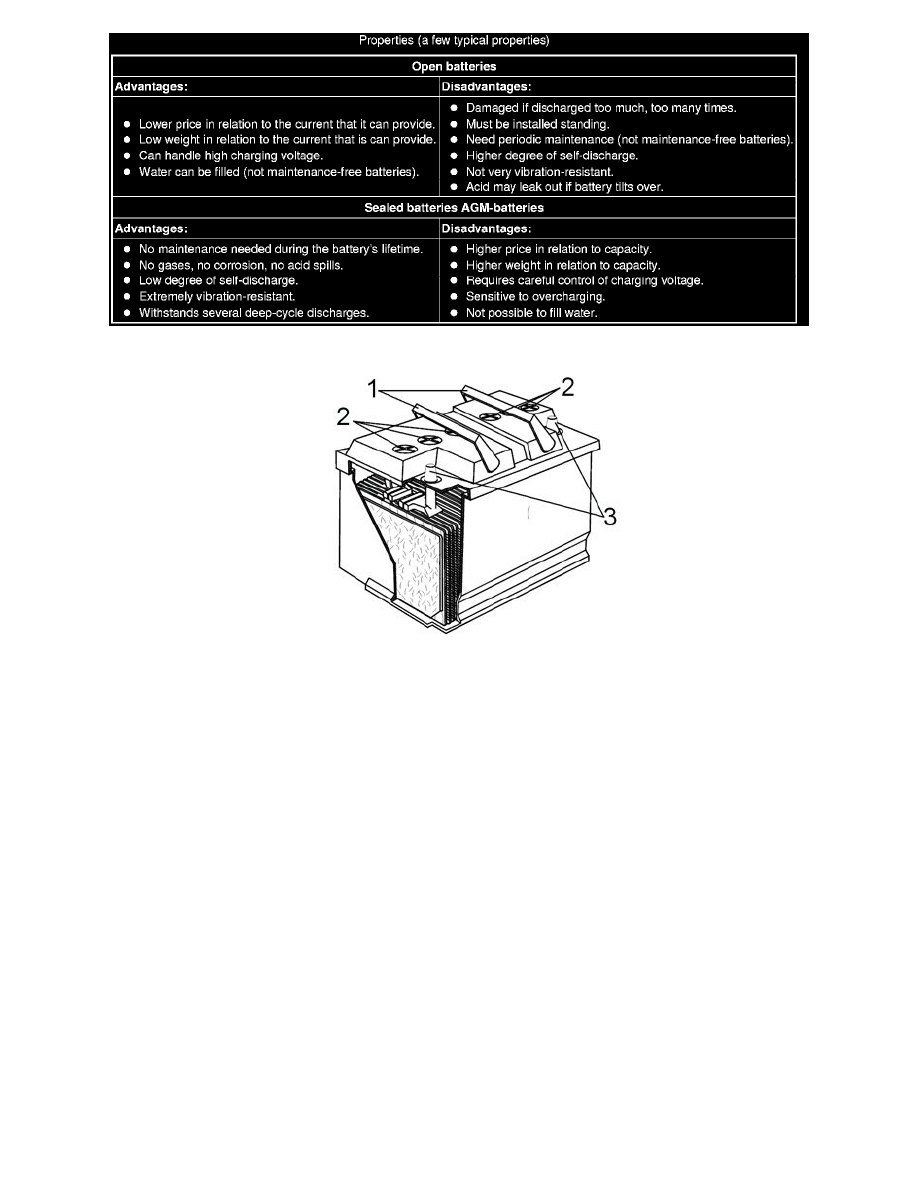V40 L4-1.9L Turbo VIN 25 B4204T2 (2000)

The construction of the battery
Battery
1. Handle (on certain battery models)
2. Plugs (not maintenance-free as well as AGM-batteries)
3. Positive and negative posts.
The battery is in a plastic container and has six internal chambers, one for each cell. These chambers are not connected to each other. This means that the
electrolyte level can drop in one chamber without affecting the level in the other chambers. The cells are connected in series by a sealed joint between
each chamber.
On the top of some "open" batteries, there is a cover with six plugs, one for each cell. The plugs can be opened to check electrolyte level and for topping
up with battery water. Maintenance-free batteries as well as AGM-batteries do not have these plugs and therefore cannot be topped up with battery water.
The battery is filled with electrolyte. The electrolyte consists of diluted sulfuric acid (H2SO4) which is a mixture of concentrated sulfuric acid and
distilled or deionized water. Electrolyte is often referred to as battery acid. Electrolyte has a density of 1.28 g/cm3 when the battery is fully charged.
A battery is built up of two or more cells connected in series depending on which terminal voltage is desired. An open car battery consists of six cells and
the terminal voltage of a fully charged battery is 12.72 V, that is 2.12 V per cell. For AGM-batteries, the max. terminal voltage of a fully charged battery
is 12.93 V.
The AGM-batteries' container is provided with a safety valve. The purpose is to protect the battery against too high pressure inside the battery. Too high
pressure can occur in case of incorrect charging, e.g., with too high voltage.
Note! The battery is damaged if the safety valve has been activated.
Evacuation hose (not sealed batteries)
Certain batteries (such as genuine Volvo batteries) have an evacuation hose. This applies to car models where the battery is located in the cargo
compartment (not in the engine compartment). The function of the evacuation hose is to lead any gases (oxyhydrogens) that build up in the battery during
charging away from the cargo compartment out into the open air.
Caution! The evacuation hose must be connected at all times when the battery is connected. Always remember to connect the hose and make
sure that the hose is routed downwards to the intended outlet in the body when replacing the battery!
The construction of the cells
